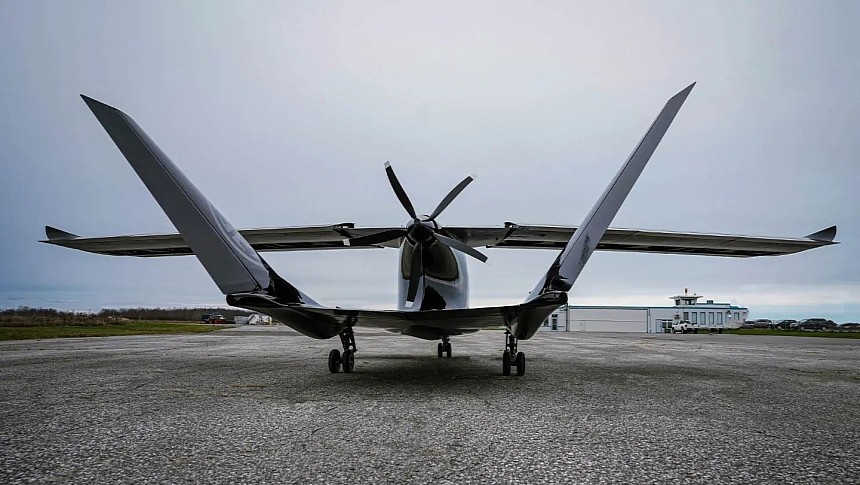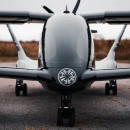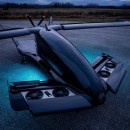Everyone likes to think of eVTOLs (electric vertical take-off and landing) as cool, futuristic-looking flying cars that will enable people to bypass road traffic and fly like the wind to any destination. Although that's not too far-fetched, electric air taxis are much more than that. They are expected to revolutionize EMS and SAR operations, which could save many lives.
eVTOLs were developed as an alternative to helicopters that promises both greater efficiency and emission-free flights. By blending the capabilities of helicopters with those of fixed-wing airplanes, eVTOLs can travel faster and better while maintaining the ability to reach places with limited or no infrastructure.
These qualities make them particularly suitable for air ambulance and humanitarian operations.
Here are two important facts about the air ambulance sector: the overall number of flights has drastically increased since the pandemic worldwide, and this particular market is expected to double by the end of this decade.
These are the main findings of an extensive analysis conducted by Horizon Aircraft. The Canadian company looked closely at the global air ambulance market and the domestic one. Since the beginning of this year, the sheer number of air ambulance departures has increased significantly compared to the pre-pandemic numbers. We're talking about a 26% increase in the global market and a 97% growth in the Canadian market compared to 2019.
In terms of value, this particular market is expected to reach nearly $10 billion by the end of 2030, almost twice its worth in 2022.
The number of medical emergencies keeps growing, and time is of the essence in most of these cases. Electric air taxis can help transport patients to hospitals much faster than helicopters without polluting urban areas even more (currently afflicted by both CO2 and noise pollution).
Another advantage that could potentially have a positive impact is the lower cost. Overall, eVTOLs claim to be much cheaper to operate than conventional helicopters. A lot of that has to do with the minimal maintenance required for all-electric flying vehicles, plus the fuel savings.
Air ambulance services in various parts of the world are already using drones for transporting essential medical supplies and even vital organs. eVTOLs can take things to the next level by carrying patients faster, more efficiently, and in full safety.
Horizon Aircraft makes a bold promise for its hybrid-electric air taxi, named the Cavorite X5. The four-seat (plus a pilot) aircraft offers the same capabilities as a helicopter but at double speed and significantly lower costs. Thanks to the hybrid-electric propulsion, the Cavorite X5 offers a much better range (500 km/270 nautical miles) than similar all-electric air taxis.
The Cavorite X5, ready to enter service by 2026, could be one of the eVTOLs that will change air ambulance services for the better.
These qualities make them particularly suitable for air ambulance and humanitarian operations.
Here are two important facts about the air ambulance sector: the overall number of flights has drastically increased since the pandemic worldwide, and this particular market is expected to double by the end of this decade.
These are the main findings of an extensive analysis conducted by Horizon Aircraft. The Canadian company looked closely at the global air ambulance market and the domestic one. Since the beginning of this year, the sheer number of air ambulance departures has increased significantly compared to the pre-pandemic numbers. We're talking about a 26% increase in the global market and a 97% growth in the Canadian market compared to 2019.
In terms of value, this particular market is expected to reach nearly $10 billion by the end of 2030, almost twice its worth in 2022.
The number of medical emergencies keeps growing, and time is of the essence in most of these cases. Electric air taxis can help transport patients to hospitals much faster than helicopters without polluting urban areas even more (currently afflicted by both CO2 and noise pollution).
Another advantage that could potentially have a positive impact is the lower cost. Overall, eVTOLs claim to be much cheaper to operate than conventional helicopters. A lot of that has to do with the minimal maintenance required for all-electric flying vehicles, plus the fuel savings.
Air ambulance services in various parts of the world are already using drones for transporting essential medical supplies and even vital organs. eVTOLs can take things to the next level by carrying patients faster, more efficiently, and in full safety.
Horizon Aircraft makes a bold promise for its hybrid-electric air taxi, named the Cavorite X5. The four-seat (plus a pilot) aircraft offers the same capabilities as a helicopter but at double speed and significantly lower costs. Thanks to the hybrid-electric propulsion, the Cavorite X5 offers a much better range (500 km/270 nautical miles) than similar all-electric air taxis.
The Cavorite X5, ready to enter service by 2026, could be one of the eVTOLs that will change air ambulance services for the better.








